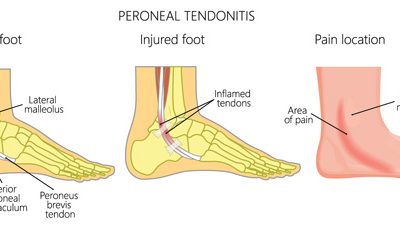Mechanism of Dysfunction
The main predisposing factor for the development of this condition is the impaired ankle/foot mechanics caused by a compromised of the arches (see Flat foot page for detailed information), particularly the inner and transverse, resulting the foot to lose its intrinsic shock absorption support, and eventually overstretching and damaging the Lisfranc ligament.
Is important to note that for the ligament to become injured, the previous defence mechanisms have to have failed to allow the biomechanical stress to damage the ligament, therefore, the treatment care must aim to restore the health of the entire ankle/foot protective structures.
Assessment Protocol
The entire lower extremity biomechanical chain must be evaluated as part of the foot/Ankle analyses as per the neurological and mechanical influences of the spine, hip, and knee.
Clinical assessment to identify the key joint dysfunctions of the Ankle/Foot (Talus, Fibula, Navicular, calcaneus and cuneiforms) that have contributed to this condition. Soft tissue analysis to pinpoint the level of irritation in the ligament
X-ray analysis
Anterior – Posterior (AP) X-ray ankle view is essential for proper diagnosing the master joint of the ankle (Tibia-Talus) as the origin of poor arch mechanics starts from a dysfunctional ankle joint.
Lateral Xray view is important to check the degree of the total arch compromised, specially the medial arch and its corresponding key arch stone, the navicular bone.
AP Xray foot view, aids to complete the total analysis of the transverse and lateral arches and their respective keystones, middle cuneiform and cuboid
MRI
Ankle/foot MRI is essential for visualizing the extent of injury on the muscle/tendon and ligamentous layers.
Locate the exact injury point; Allows the treatment to be more specific during the application of the treatment modalities.
Identify the extent of tissue damage and the presence of scar tissue; Provides valuable information regarding prognosis and the application of friction soft tissue modalities to aid on scar tissue removal.
Rule out stress fractures not visible by the x-ray. (Lisfranc stress fracture)
Treatment protocol
The treatment care should aim to restore the foot/ankle alignment and the soft tissue muscles/tendon and ligamentous layers.
Due to the influences the foot arches have in the development of this condition, arch rehabilitation must be incorporated as part of the overall treatment.
Foot Arch treatment: Specific adjustments of key bones of the ankle and foot (Talus, Navicular, Calcaneus, Cuboid and Cuneiforms) followed by a rehabilitation regime to strengthen the entire soft tissue arch support of the foot. In addition, application of tape and corrective orthotics may be needed as part of the early rehab program.
Soft tissue healing protocol
Application of Low-level Laser and PEMF directly over the injured tissues to aid on the cellular level of healing as well as improving the microcirculation for the area.
Friction soft tissue therapy helps to reduce dysfunctional scar tissue
Specific stretches and strengthening to improve the resilient of the soft tissue support
Functional tape might be used to reposition the talus and the arch
Specific selected essential oil application to enhance healing
Depending on the level injury and chronicity, a minimum of 6 weeks up to 12 weeks of treatment care may be necessary to resolve this condition.




